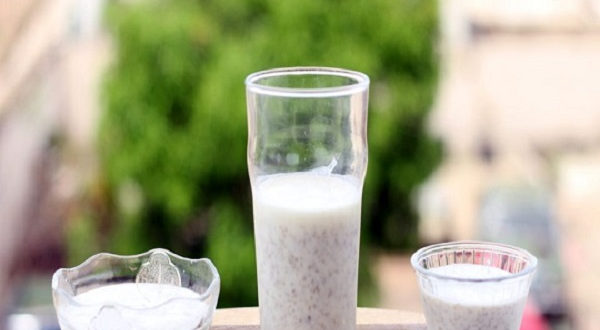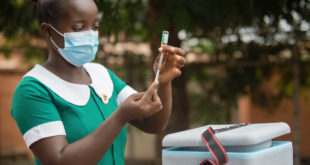This study was conducted by Kortei et al.(2022) and examined the Aflatoxin M1 levels and cancer risks associated with Burkina from different locations of the Greater Accra Region of Ghana. The study concluded that the consumption of Burkina posed adverse health effects on the majority of the age categories in the different locations of the Greater Accra Region. Therefore, contamination of Burkina with AFM1 should be considered a high priority in public health and Ghana’s cancer risk management actions.
A previous study (Kunadu et al. 2019) also looked at the sanitary conditions attached to the preparation of Burkina. The study found that only 19 per cent of wagashie and 21 per cent of brukina consumers believed these products were safe. Consistently, the odds of consuming a particular milk product were significantly higher if the consumer believed it was safe. Poor sanitation and unhygienic processing of otherwise healthy but perishable indigenous milk products have justifiably fuelled the mistrust of consumers and may hinder potential intervention efforts to increase milk production and consumption in Ghana.
My take
The study did not confirm that brukina causes cancer. The study only assesses the risk of cancer in Brukina as a result of the aflatoxin concentration in the fermented millet-based milk. Remember that Kortei et al.(2022) study is not supported by evidence that brukina causes cancer. Anything that can increase your risk of getting a disease is called a risk factor.
Different cancers have different risk factors.¬ Having one or more of these risk factors doesn’t mean you will get that cancer. So the fact that the study looked at potential risk doesn’t mean it causes cancer as propagated in the media.
A cancer risk factor is anything that increases a person’s chance of getting cancer. Yet most risk factors do not directly cause cancer. Some people with several risk factors never develop cancer. And others with no known risk factors do. Risk can be classified into:
• Absolute risk is the chance that a person will develop a disease during a given time. This identifies how many people are at risk for a disease in the general population.
For instance, consider the statement “1 out of 8 women (12.5%) will get breast cancer in her lifetime.” This describes the absolute risk for the general population of women. It cannot identify the risk for a certain person or group of people. For example, absolute risk cannot be shown if a group of older women has a higher risk of breast cancer than a group of younger women.
• Relative risk compares the risk of disease between two groups of people. It compares one group with a certain risk factor for a disease to another group’s risk.
For instance, imagine you are comparing the risk of breast cancer among two groups of 100 women. However, only the women in one group have a certain risk factor for breast cancer. The other group of women does not have this risk factor. Researchers keep track of how many people from each group develop cancer over a certain time.
Let’s say they find that two women who have the same risk factor get cancer. But only one woman without this risk factor gets cancer. Then those in the first group have two times the risk of the second group. This is a 100 per cent increase in relative risk. The absolute risk, however, would be two per cent or two out of 100 people. We still do not have evidence of what causes cancers in Ghanaians.
Besides, we do know how aflatoxin levels could also potentially predispose one to cancer. Remember, aflatoxins are not only found in millet-based diets. Corn consumption downside is aflatoxins.
Besides several cereal grains and legumes are susceptible to contamination by fungi. Two studies (Bennett and Klich, 2003; Woloshuk and Won-Bo Shim, 2012) found that fungi produce various toxins, known as mycotoxins, that are considered significant health concerns. The main classes of mycotoxins in corn are fumonisins, aflatoxins, and trichothecenes. Fumonisins are particularly noteworthy.
Another study by Waśkiewicz et al. (2012) reported that aflatoxins are found in stored cereals worldwide, but adverse health effects have mostly been linked to the consumption of corn and corn products — especially among people who depend on corn as their main dietary staple. Four studies(Wang et al. 2015; Missmer et al. 2006; Waes et al. 2005; Waes et al. 2009) also found too much consumption of contaminated corn is a suspected risk factor for cancer and neural tube defects, which are common birth defects that may result in disability or death.
One old observational study by Rensburg et al.(1985) in South Africa found that regular consumption of cornmeal could increase the risk of cancer in the esophagus, the tube that carries food from the mouth to the stomach.
Lewis et al (2005) study also found that mycotoxins in corn may also have adverse effects. 125 people died in Kenya from aflatoxin poisoning after eating homegrown corn that had been improperly stored. Effective preventive strategies may include fungicides and proper drying techniques. In most developed countries, food safety authorities monitor the levels of mycotoxins in foods on the market, with food production and storage strictly regulated.
Remember, due to the high aflatoxins content in corn, one study from Ghana linked kenkey to cancer. In explaining this exposition, Agbetiameh et al. article in the graphic. Com, 2018, reported that several aflatoxin surveillance studies detected varying levels of the toxins in maize, groundnuts, and their derivative products. To cite but a few, aflatoxin levels reaching 4,800 parts per billion (ppb; a ppb is akin to one drop of water in an Olympic-size swimming pool) were detected in market samples of maize in Accra. Toxin level in fermented maize dough was found to be up to 289 ppb, Kenkey 51 ppb, groundnut 216 ppb, groundnut paste > 3,200 ppb, and Tom Brown 104 ppb. Indeed, these aflatoxin levels exceeded the safety limit for human consumption.
The Ghana Standards Authority (GSA) sets the threshold at 15 ppb for maize and 20 ppb for groundnuts. Critically, those contamination levels demonstrate that the majority of Ghanaians are exposed to unsafe aflatoxin levels in foods (Banku, Kenkey, Akple, Tuo Zaafi, Kooko, Aboolo, groundnut soup, etc.) prepared primarily from such contaminated crop products.
However, Kortei et al.(2021) found that although there was some observed contamination of maize across the different ecological zones, the consumption of maize (white and colored) posed no adverse health effects on the population of Ghana. An earlier study from Ghana by Agbetiameh et al.(2018) found aflatoxins in maize and called for measures to address them. In combating this in the Ghanaian space, they introduced aflatoxin products such as Aflasafe GH02 to reduce its level in Ghanaian corn. When properly applied, Aflasafe prevents crop infection and contamination, reducing aflatoxins by between 80 and 100 percent in target crops such as maize, groundnuts, and sorghum.
Brukina, benefits
Brukina which is said to have originated from Burkina Faso is popular in Ghana.
Millet in Brukina contains magnesium, manganese, calcium, phosphorus, Vitamin B, etc.
The milk contains Vitamin D and Calcium. Apart from that, science has linked the many benefits of eating millet-based diets. For instance,
Six studies (Devi et al. 2016; Kumari et al. 2017; Pizino et al. 2017; Xiang et al. 2019; Chandrasekara and Shahidi, 2010) confirmed that millet is loaded with phenolic compounds, specifically ferulic acid, and catechins. They work as antioxidants to guard the body against harmful oxidative stress.
Also, Two studies (Devi et al. 2016; Kam et al.2016) found that millet is loaded with fiber and non-starchy polysaccharides, two types of undigestible carbs that are likely to control blood sugar levels.
Another newsworthy is that two studies for instance (Dias-Martins et al. 2018; Narayanan et al. 2016) found that millet is capable of controlling blood sugar due to its low glycemic index (GI), which means that when you eat a millet diet, there is no worry of blood sugar rising. Hence, diabetics can eat a millet- diet once the other combined ingredients are diabetics friendly.
This was demonstrated in one human study by Narayanan et al. (2016) where 105 people with type 2 diabetes took part. The researchers found that using a millet-based diet to replace a rice-based breakfast reduced blood sugar levels after the meal.
Another human study of 64 people for a 12-week duration with prediabetes also reported the same findings. After eating 1/3 cup (50 grams) of foxtail millet per day, the participants’ blood sugar was reduced in both fasting and random blood sugar levels, and decrease in insulin resistance.
Brown et al. (2016) explained that insulin resistance is a marker for type 2 diabetes. This normally happens when you decide to yield to the hormone insulin, which regulates blood sugar. Finally, Shobana et al.(2010) 6-week study in rats with diabetes found that when the animals were given, a diet that contained 20% finger millet resulted in lowering fasting blood sugar and a drop in triglyceride and cholesterol levels.
Millet, warning
One study by Boncompagni et al.(2018)found that millet contains antinutrients — compounds that block or lower your body’s absorption of other nutrients and may lead to deficiencies. Phytic acid is one such compound that interferes with potassium, calcium, iron, zinc, and magnesium uptake. This notwithstanding, once your diet is balanced, there is no problem. Goitrogenic polyphenols are another compound that is likely to damage thyroid function, causing goiter — an enlargement of the thyroid gland that results in neck swelling.
However, this effect is related only to excess polyphenol intake. Two studies( Boncompagni et al. 2018; Gonçalves et al. 2017) for instance, found that goiter was found when millet provided 74 per cent of a person’s daily calories, compared with only 37% of their daily calories. This concern can be addressed by soaking it overnight at room temperature, and then draining and rinsing it before cooking(Singh, 2016). Additionally, sprouting reduces antinutrient content. Besides, fermented milk such as yogurt has been found to contain protein, calcium, phosphorus, vitamin B12, and iron. Hence, no concrete evidence abduced that Brukina causes cancer. You can make your brukina at home and avoid the commercial version to reduce your risk of exposure to microbes.
NB: Prof. Nyarkotey has strict sourcing guidelines and relies on peer-reviewed studies, academic research institutions, and medical associations to justify his write-ups. My articles are for educational purposes and do not serve as Medical advice for Treatment. I aim to educate the public about evidence-based scientific Naturopathic Therapies.
The writer is a Professor of Naturopathic Healthcare, President, of Nyarkotey College of Holistic Medicine & Technology (NUCHMT)/ African Naturopathic Foundation. E-mail: professor40naturopathy@ gmail.com.
THANK YOU for constantly reading stories on TodayGhanaMedia.com, a news publishing website from Ghana. Kindly like, follow, comment, and SHARE stories on all social media platforms for more entertaining updates!
Follow us on Twitter: https://twitter.com/
Source: TodayGhanaMedia.com

Admission is still in progress… Get yourself trained in any of our programmes to become a professional healthcare practitioner. Apply now! visit: racoh.edu.gh
 MYGHANAMEDIA.COM Best Source Of Latest News
MYGHANAMEDIA.COM Best Source Of Latest News





